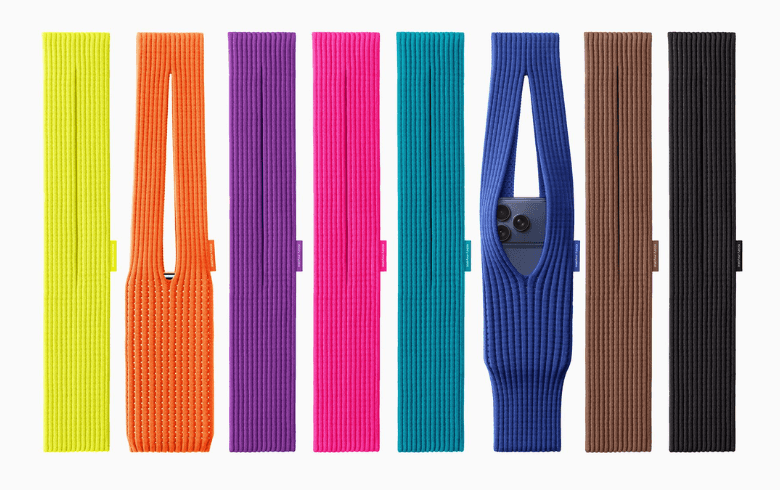Do You Really Need an iPhone Pocket?

The arrival of the iPhone pocket has generated attention, confusion, and skepticism in equal measure. Apple’s collaboration with Issey Miyake introduced a wearable accessory marketed as a refined way to carry an iPhone. Yet the question stands: do you genuinely need an iPhone pocket, or is this another premium experiment searching for justification? The keyword iPhone pocket dominates the discussion not because it solves a real problem, but because it highlights the widening gap between utility and luxury-driven design.
Contents
Understanding the Concept
The iPhone pocket positions itself as a minimalist, fabric-based holster designed to keep the device at chest or torso level. Its structure relies on 3D-knit textiles, reinforced curvature, and a sculpted cavity meant to cradle recent iPhone models without rigid plastic. Apple and Issey Miyake present it as an elegant, hands-free alternative to conventional pockets or bags.
However, the user’s daily experience with a smartphone rarely demands a bespoke chest-mounted pouch. Standard pockets, crossbody bags, or simple cases already manage the basic task of carrying a phone. The iPhone pocket offers a narrower, more stylistic approach that many will find unnecessary.
The Price Issue
One of the most controversial points around the iPhone pocket is its cost. High-end fabric engineering and designer branding have pushed the accessory far beyond typical phone-carrying solutions. Consumers evaluating the item quickly notice that the pricing places it in premium fashion territory rather than practical utility. The iPhone pocket becomes an emblem of over-design, appealing to niche buyers who prioritize novelty over function.
Even though the materials incorporate advanced knitting and structural shaping, the value proposition remains questionable. Most users want protection, accessibility, and durability; the iPhone pocket provides design-first aesthetics with limited added benefit.
Early Demand Does Not Equal Necessity
Reports of early stock depletion for similar smartphone-carrying accessories often stem from hype-driven launches rather than long-term demand. The iPhone pocket entered the market riding on the momentum of fashion-tech collaborations and the cultural pull of Apple’s product ecosystem. This does not inherently validate the accessory’s utility.
Short-term sellouts reflect curiosity, collector interest, and trend adoption rather than practical need. The iPhone pocket’s appeal aligns more with limited-edition fashion drops than with essential everyday tools.
Usability Limitations
The concept struggles when confronted with typical daily movement. Activities such as sitting in tight spaces, bending forward, or wearing outer layers complicate access. A front-mounted iPhone pocket becomes obstructed by jackets, backpacks, or seat belts. Instead of enhancing usability, it can introduce friction.
Moreover, the accessory adds another wearable layer that must coordinate with clothing choices. Users who value minimal carry solutions may find the iPhone pocket redundant. It neither replaces a traditional bag nor enhances the function of existing pockets.
Durability Versus Practicality
The manufacturing quality of the iPhone pocket is not in dispute. The 3D-knit structure is engineered to maintain shape, protect the device, and minimize pressure on internal components. Stitching, elasticity, and contouring demonstrate thoughtful craftsmanship.
But durability does not necessarily translate into necessity. Many protective cases and crossbody slings offer more comprehensive protection at a fraction of the price. The iPhone pocket’s durability supports the object as a fashion accessory, not as a pragmatic tool.
Cultural and Fashion-Driven Context
The iPhone pocket sits squarely at the intersection of designer fashion and consumer electronics. This segment thrives on experimentation, limited releases, and visual identity. Products within this space often prioritize aesthetic statements over problem-solving.
The accessory’s sleek minimalism, neutral color palettes, and sculptural form appeal to fashion-forward consumers. But its real-world value declines for anyone expecting functional gains. The iPhone pocket symbolizes a trend: the elevation of everyday tech into wearable art commissioned by major brands.
When the iPhone Pocket Makes Sense
There are a few narrow use cases where the iPhone pocket could hold some relevance. Urban commuters who dislike bags, stylists seeking unique silhouettes, or individuals who view their smartphone as a design component may gravitate toward it. For these users, the iPhone pocket becomes part of a personal aesthetic rather than a utilitarian object.
However, these scenarios represent exceptions rather than mainstream needs.
A Product of Excess Rather Than Innovation
The core issue lies in the mismatch between price, purpose, and practicality. The iPhone pocket reflects a broader pattern in consumer tech: accessories designed to complement devices but primarily aimed at lifestyle branding.
The keyword iPhone pocket continues to trend not because it introduces groundbreaking functionality, but because it exemplifies how far the accessory market can stretch the idea of necessity.
The iPhone pocket is a well-made, visually appealing, and undeniably premium object. It is also largely unnecessary for the average user. High pricing combined with limited functional advantage positions it closer to a collectible fashion item than a meaningful improvement to everyday smartphone use.
The question, do you really need an iPhone pocket answers itself once examined objectively. Most users do not. Its existence is more about design ambition and brand identity than solving any problem that demanded innovation.
